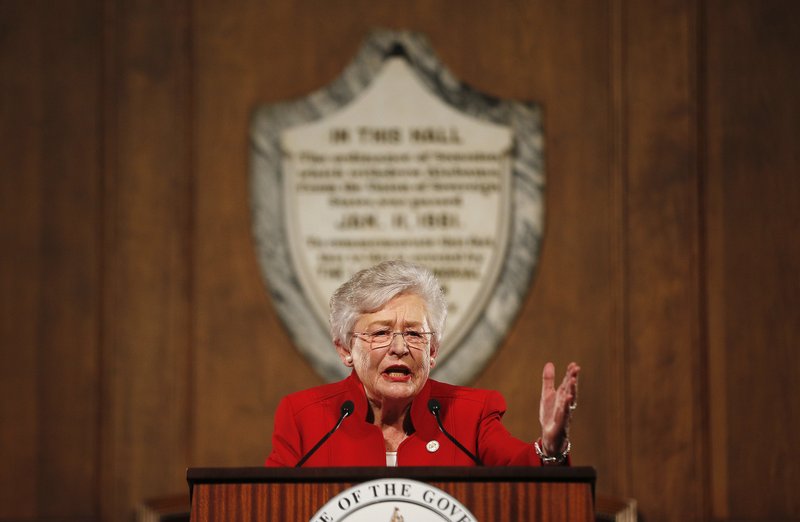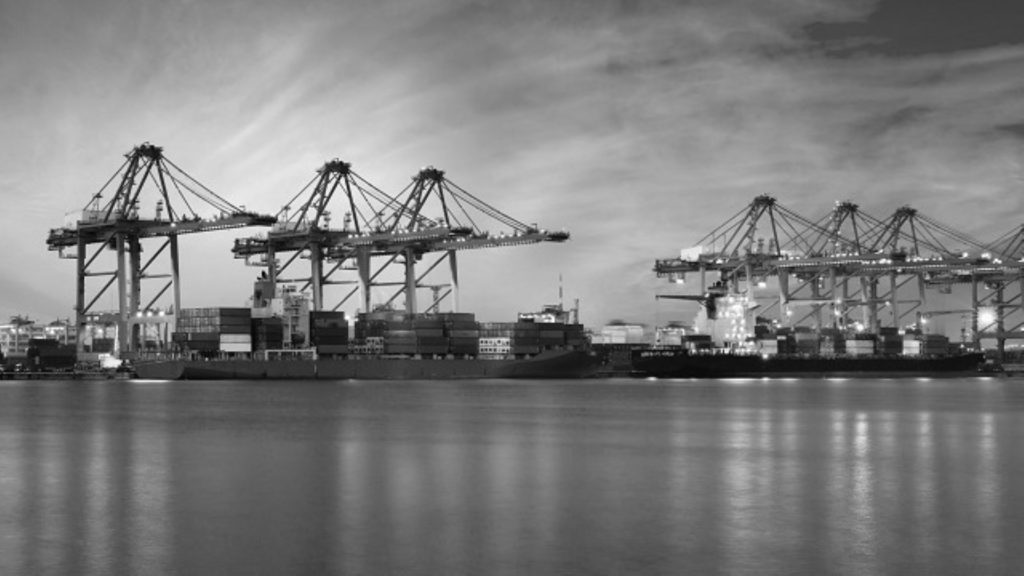50 new jobs coming to Cullman County as AGCO moves production line from Germany

AGCO, a global leader in the design, manufacture and distribution of agricultural equipment, is moving its Farmer Automatic Production Line from Germany to Bremen, Ala. in rural Cullman County. The move is a 50.7 million-dollar investment in Cullman County and will create a total of 50 new jobs. Governor Kay Ivey on Wednesday will speak at a 2:30 p.m. ribbon cutting ceremony for the new production line in Bremen. More details to follow.
Kay Ivey says Alabama could lose up to 4,000 jobs due to tariffs

Last week, Alabama governor Kay Ivey released a statement saying the Trump Administration’s new tariffs will cause harm to the Yellowhammer State’s economy. Taking it a step further, she contacted U.S. Secretary of Commerce Wilbur Ross and several members of the Alabama congressional delegation expressing her concerns. “Import tariffs, and any retaliatory tariffs on American made goods, will harm Alabama, the companies that have invested billions of dollars in our state, and the thousands of households which are dependent upon those companies for a good-paying job,” Ivey said in a statement. “I strongly oppose any efforts that may harm those companies that employ thousands of Alabamians and contribute billions to our economy. I am committed to protecting Alabama jobs and consumers, the world over, who are proud to purchase products made in Alabama.” In her letter to Ross, Ivey touted Alabama’s record year in 2017 citing the nearly $3 billion in automotive-related investments, the announcement of a new Mazda-Toyota plant, and the more than 57,000 Alabamians who are already employed by the sates manufacturing sector. “In 2017, Alabama produced almost one million cars and light trucks and 1.7 million engines. However, Alabama’s success relies on access to foreign markets and imports of certain automotive components that become part of the vehicles produced in our state,” Ivey’s letter read. “Last year, Alabama reached a record high of $21.7 billion in exports. Our top export category was automotive, accounting for $10.9 billion of those exports. The largest importers of Alabama made goods and services were Canada, China, Germany, Mexico and Japan – all countries which may be forced to reciprocate in response to any new import tariffs.” Ivey ended her letter to Ross by saying that tariffs places on imported materials used for car manufacturing, and tariffs placed on the state’s exported vehicles would increase costs and cause a high number of Alabamians to lose their jobs. “Estimates show that a ten percent decrease in Alabama-made vehicle exports could result in the loss of approximately 4,000 jobs in Alabama,” the letter continued. “Such a loss would be devastating to thousands of families across our state. These are Alabama families who are dependent on the income from working in these facilities.” “As Governor of the Great State of Alabama, I strongly oppose any efforts that may harm those companies that employ thousands of Alabamians and contribute billions to our economy. I respectfully ask that you not recommend to President Trump the levying of trade tariffs on automobiles and automotive parts.”
Alabama exports surging in unexpected corners of the world

It’s clear that 2016 was a stellar year for Alabama exports, with rising shipments in a number of markets worldwide, signaling even more optimism for the future. The top five destinations for state goods and services – Canada, China, Germany, Mexico and the United Kingdom – remained relatively unchanged from 2015 and most showed year-over-year growth. Overall, Alabama-made goods were shipped to 189 countries. A number of them, while not among the top five, showed significant growth in 2016, including Kuwait, Russia, Taiwan and the United Arab Emirates. The Alabama Department of Commerce is always studying trade trends among state businesses and manufacturers, using the information to plan seminars and trips aimed at helping companies boost their export business, said Hilda Lockhart, director of Commerce’s Office of International Trade. Economic engine With Alabama’s 2016 exports reaching a record $20.55 billion, increasing 6.4 percent from the previous year, officials are looking to build on that momentum, Lockhart said. “We know rising exports for Alabama companies in overseas markets means greater potential for new jobs and investment back home,” Lockhart said. “International trade is truly a local economic engine, and Alabama workers and communities benefit from the growth.” U.S. Commerce Department figures show the state’s exports have risen 15 percent since 2011 and 48 percent since 2006. Vehicles are the state’s top export, by a large margin. Other key categories include chemicals, primary metals, paper products and non-electrical machinery, a category that includes combustion engines, agricultural machinery, metalworking machine tools and much more. Lockhart offered a closer look at some of the fastest-growing markets for Alabama exports, and what’s driving them: KUWAIT: Alabama’s exports to the Persian Gulf country increased to $104.9 million in 2016, a 285 percent spike from the previous year. The largest increases were in fabricated metal products, chemicals and paper. “This year Alabama was Kuwait’s No. 1 trading partner in the nation for fabricated metal products, perhaps due to the country’s recent expenditures on various hydrocarbon and petrochemical refineries, such as the $10 billion Olefins 3 plant,” Lockhart said. Currently in the pre-execution phase, the Olefins 3 plant will produce 1.4 million tons of ethylene a year when it is completed. The petrochemical is commonly used in the manufacturing process. RUSSIA: Shipments of state exports to Russia rebounded in 2016 to $102.1 million, after a poor showing the previous year, with major increases in the export of non-electrical machinery, chemicals and paper. Alabama was Russia’s No. 5 trading partner among U.S. states for non-electrical machinery products.Russia’s demand for machinery is “driven by the government’s strategy to modernize Russian industry across several sectors, including power generation, transportation, defense, automotive and aerospace,” according to the U.S. Foreign Commercial Service. Lockhart said the drop in exports in 2015 likely occurred because of the contraction in the price of oil that year, which caused a recession in Russia and other oil-producing countries. TAIWAN: Exports from Alabama to Taiwan nearly doubled in 2016, increasing to approximately $200 million. The largest gains were in chemicals, computer and electronic products, and paper. “Chemical exports alone accounted for more than half of the 2016 total, showing a two-year increase from $19.6 million in 2014 to $102.7 million in 2016,” Lockhart said. The state was Taiwan’s No. 6 trading partner in the nation for chemicals, predominantly in the category of basic chemicals, which include industrial gases used in the semiconductor production process. Lockhart said the semiconductor industry, including manufacturing, design and packaging, is a cornerstone of the Taiwanese IT economy, so it is likely that the increased exports are feeding into this sector. UAE: Alabama firms shipped $467.8 million in exports to the United Arab Emirates in 2016, an increase of more than 100 percent compared to exports just two years earlier. Much of the growth took place in the categories of transportation equipment, non-electrical machinery and chemicals. The state was the UAE’s No. 5 trading partner in the U.S. for transportation equipment, with this category alone accounting for $396.2 million of the export total for the year. “Aerospace products make up the bulk of these transportation equipment exports as the UAE develops its burgeoning satellite and Mars mission programs, expands its military and increases investment in the commercial airline industry,” Lockhart said. Meanwhile, other up and coming markets have shown significant growth over the past five years, and they could be potential targets of new, increased efforts to fuel trade, Lockhart said. The countries include Vietnam, Oman, the Bahamas, Denmark, Finland, Kenya, Liberia, Hungary and Bosnia-Herzegovina. This story originally appeared on the Alabama Department of Commerce’s Made in Alabama website. Republished with permission of Alabama NewsCenter.
Bob Driver: Adolf Hitler and Donald Trump (a comparison)

Donald Trump, who may very well become our next president, is being accused of Hitlerism. By the time this column appears, the charges may have been dismissed. Or confirmed. Whichever way it goes, it behooves all of us to think about Hitler and Trump, and how they compare. For younger readers and those who may have heard vague reports about World War II and other related events, a little history: Adolf Hitler was a German soldier and political activist who climbed to power in Germany in the 1920s and 1930s. His National Socialist (Nazi) Party took full control in 1933. In September 1939, Germany invaded Poland, which triggered the beginning of World War II. Not long afterward, Hitler invaded the Soviet Union. Bad move. Within a few years the USA, United Kingdom, Russia and other Allied nations reduced Germany to a bombed-out starving wasteland. Enough history. Let’s see how, or whether, Donald Trump and Adolf Hitler resemble each other: WEALTH. Trump was born with a platinum spoon in his mouth. Initially, Hitler was poor as a church rat but later enjoyed many creature comforts. At his death, he owned an extensive underground bunker in Berlin. SPEAKING STYLE. Hitler was a dynamic orator. His high-pitched voice and passionate utterances excited his followers and drove them to the edge of madness, especially when he revealed that most of Germany’s (and the universe’s) woes could be blamed on the Jewish people. He was a student of government and politics, and easily listed dozens of twisted reasons why he should lead Germany. Donald Trump also speaks in a penetrating, passionate manner to his overflow crowds, most of whom would cheer themselves hoarse even if Trump uttered nothing more than “Fish for sale!” Rather than referring to specific facts to support his beliefs, he relies on repetition of a few mostly inflammatory thoughts. He also uses various insults to thwart anyone who disagrees with him. This sets him far above Hitler, who dealt with opponents by having them shot. PHYSICAL ATTRIBUTES. Hitler was not much to look at. He was fairly short, and seldom smiled. It was rumored that he was born with only one testicle. If true, this did not keep him from scaring the tar out of thousands of more fully equipped males in Germany and elsewhere. Trump’s most notable physical deficiency is a paucity of hair on the forward half of his scalp. He also has a habit of pursing his lips and defiantly tilting his chin upward, much like the Italian fascist dictator Benito Mussolini did in his Roman balcony harangues. ROMANCE AND MARRIAGE. Hitler didn’t have much luck with the ladies. He is believed to have connected with several young women, but the hookups did not endure, partially because a number of the women committed suicide. Hitler’s longest romance was with blond Eva Braun. They did not marry until late April 1945 when Russian troops were turning Berlin into a morgue. Two days after the wedding ceremony, Adolf and Eva killed themselves. Their bodies were burned. Donald Trump’s personal life has been somewhat cheerier. He has married three attractive women (although not all at the same time). They have given him five children, all of whom reportedly think highly of their father. RELIGIOUS BELIEFS. The Donald (as Trump’s many friends sometimes call him) is a (non-devout) Presbyterian, reflecting his Scottish roots. He has maintained good relations with other religious adherents, until recently when he uttered some unkind words about militant Muslims. Hitler’s thoughts about religion were vague, except for his lifelong anti-Semitic fervor. He liked to think of a heaven where everyone resembled Norse gods and goddesses and was enraptured by the music of Richard Wagner. Hitler did not believe in an eternal hell. Instead, he created it on earth, to the tune of 29 million victims of Nazi ambitions. IMMIGRATION POLICIES. Hitler did not welcome newcomers to Germany unless they were Aryan, enjoyed book-burning and wept copiously as they sang “Deutschland Uber Alles” while smashing the windows of Jewish shopkeepers. Hitler’s final solution to the presence of unwanted citizens was to emigrate them to concentration camps. As I write these words on Dec. 9, Donald Trump is saying various things about U.S. immigration and anti-terrorism policies. They can be summed up as “Send the illegal bad guys back to where they came from, and don’t let Muslims inside our land until they are officially purified.” CONCLUSION. All aspects considered, I’d much rather have Donald Trump in the White House than Adolf Hitler. However, this should not be considered my endorsement of Trump, except to say I hope he stays in the race until the very end. Rightly or wrongly, Trump is the personification of the First Amendment – freedom of speech – at a time when many in our land want to bend it, cripple it or shut it down. Bob Driver writes for Tampa Bay Newspapers. He is a former editorial page editor for the Clearwater (Florida) Sun. For more state and national commentary visit Context Florida.
Conservative dissent against Obama refugee resettlement plan continues to mount

As President Barack Obama continues to seek public support for yet another controversial foreign policy initiative, in Alabama, his plan to raise the cap on refugees allowed into the country is instead garnering stern reproach from elected officials. The president, via Secretary of State John Kerry, recently rolled out a plan to gradually increase the annual cap on refugees allowed into the country from foreign soil to 100,000, up from 70,000 today. Alabama’s junior senator Sen. Jeff Sessions, on Monday took to the rostrum in the Capitol to excoriate Obama’s plan, saying the U.S. had already taken in some 1.5 million immigrants from Muslim nations since the attacks of September 11 and that given our federal deficit, that is plenty for the time being. “The U.S. has already taken in four times more immigrants than any other nation on Earth. Our foreign-born population share is set to break every known historical record,” inveighed Sessions. “Ninety percent of recent refugees from the Middle East living in our country are receiving food stamps and approximately 70 percent are receiving free healthcare and cash welfare. All of the nearly 200,000 refugees the Administration is planning to bring over the next two years would be entitled to these same benefits the moment they arrive.” “Since we are running huge deficits, every penny of these billions in costs will have to be borrowed and added to the debt,” Sessions added. He is far from alone in his opposition, especially among fellow southern Republicans. Congressman Bradley Byrne on Tuesday issued an announcement detailing his recent letter to the State Department citing concerns – echoed by Sessions and conservative columnist Rich Lowry in Monday’s New York Post among others – surrounding the nation’s limited capacity for vetting the incoming refugees. “Terrorist groups have made clear they intend to use the refugee process to infiltrate our country, and I have serious concerns about increasing the number of allowed refugees,” wrote Byrne in a letter to the department’s Bureau of Population, Rufugees, and Migration. So far, the U.S. has only accepted 1,500 refugees from Syria since the civil conflict began there four years ago. Millions have been displaced, largely looking to resettle in Turkey – which has taken in some 2 million Syrian refugees – or in continental Europe. Germany for instance, expects to take in up to 1 million refugees this year. The U.S. announced plans earlier this week to contribute some $419 million in aid to European and Middle Eastern countries which have taken the brunt of the mass exodus out of war-torn Syria.


